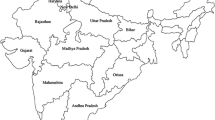Abstract
Microsatellites, also known as simple sequence repeats (SSRs), are the class of repetitive DNA sequences present throughout the genome of many plant and animal species. Recent advances in molecular genetics had been the introduction of microsatellite markers to investigate the genetic structuring of natural plant populations. We have employed an enrichment strategy for microsatellite isolation by using multi-enzymes digestion, microsatellite oligoprobes, and streptavidin magnetic beads in Sesamum (Sesamum indicum L.). More than 200 SSR motifs were detected (SSR motifs ≥2 repeat units or 6 bp); 80 % of the clones contained SSR motifs. When regarding SSRs with four or more repeat units and a minimum length of 10 bp, 132 of them showed repeats. Eighteen SSR markers were initially characterized for optimum annealing temperature using a gradient PCR technique. Among the 18 SSR markers characterized, five were found to be polymorphic and used to analyze 60 Sesamum germplasm accessions. The maximum number of alleles detected was four with a single primer and the least number of two alleles with three primers with an average PIC value of 0.77. SSRs are a valuable tool for estimating genetic diversity and analyzing the evolutionary and historical development of cultivars at the genomic level in sesame breeding programs.

Similar content being viewed by others
References
Ashri, A. (2010). In J. Janick (Ed.), Plant breeding reviews (Vol. 16). Oxford: Wiley.
Bedigian, D., & Harlan, J. (1986). Economic Botany, 40(2), 137–154.
Bedigian, D., Seigler, D. S., & Harlan, J. R. (1985). Biochemical Systematics and Ecology, 13, 133–139.
Fukuda, Y., Nagata, M., Osawa, T., & Namiki, M. (1986). Journal of the American Oil Chemists’ Society, 63, 1027–1031.
Cheung, S. C., Szeto, Y. T., & Benzie, I. F. (2007). Plant Foods for Human Nutrition, 62, 39–42.
Chung, C. H., Yee, Y. J., Kim, D. H., Kim, H. K., & Chung, D. S. (1995). Plant Science, 109, 237–243.
Liu, C. J. (1997). Euphytica, 98, 21–27.
Reiter, S. R., Young, M., & Scolnik, P. A. (1993). Methods in Arabidopsis research. Singapore: World Scientific Publishing.
Isshiki, S., & Umezaki, T. (1997). Euphytica, 93, 375–377.
Bhat, V., Babrekar, P., & Lakhanpaul, S. (1999). Euphytica, 110, 21–33.
Kim, D., Zur, G., Danin, P., Lee, Y. S., Shim, K., Kang, C., et al. (2002). Plant Breeding, 121, 259–262.
Uzun, B., Lee, D., Donini, P., & Cagrirgan, M. (2003). Identification of a molecular marker linked to the closed capsule mutant trait in sesame using AFLP. Plant Breeding, 122, 95–97.
Dixit, A., Jin, M. H., Chung, J. W., Yu, J. W., Chung, H. K., Ma, K. H., et al. (2005). Molecular Ecology Notes, 5, 736–738.
Wei, L. B., Zhang, H. Y., Zheng, Y. Z., Guo, W. Z., & Zhang, T. Z. (2008). Acta Biochimica et Biophysica Sinica, 34, 2077–2084.
Powell, W., Morgante, M., Andre, C., Hanafey, M., Vogel, J., Tingey, S., et al. (1996). Molecular Breeding, 2, 225–238.
Sambrook, J., & David, R. W. (2001). Molecular cloning: a laboratory manual (3rd ed.). Cold Spring Harbor: Cold Spring Harbor Press.
Sambrook, J., Fritsch, E. F., & Maniatis, T. (1989). Molecular cloning: a laboratory manual. Cold Spring Harbor: Cold Spring Harbor Laboratory.
Temnykh, S., DeClerck, G., Lukashova, A., Lipovich, L., Cartinhour, S., & McCouch, S. (2001). Genome Research, 11, 1441–1452.
Doyle, J. J., & Doyle, J. L. (1987). Phytochemical Bulletin, 19, 11–15.
Karagyozov, L., Kalcheva, I. D., & Chapman, V. M. (1993). Nucleic Acids Research, 21, 3911–3912.
Armour, J. A., Neumann, R., Gobert, S., & Jeffreys, A. J. (1994). Human Molecular Genetics, 3, 599–605.
Kijas, J. M., Fowler, J. C., Garbett, C. A., & Thomas, M. R. (1994). Biotechniques, 16, 656–662.
Akkaya, M. S., Bhagwat, A. A., & Cregan, P. B. (1992). Genetics, 132, 1131–1139.
Gautami, B., Ravi, K., Lakshmi Narasu, M., Hoisington, D. A., & Varshney, R. K. (2009). International Journal of Integrative Biology, 7, 100–106.
Chin, E. C. L., Senior, M. L., Shu, H., & Smith, J. S. C. (1996). Genome, 39, 866–873.
Reiter, W. D. (2002). Current Opinion in Plant Biology, l5, 536–542.
Finnegan, E. J., Genger, R. K., Peacock, W. J., & Dennis, E. S. (1998). Annual Review of Plant Physiology and Plant Molecular Biology, 49, 223–247.
Deininger, P. (1983). Analytical Biochemistry, 129, 216–223.
Kolliker, R., Jones, E. S., Drayton, M. C., Dupal, M. P., & Forster, J. W. (2001). Theoretical and Applied Genetics, 102, 416–424.
Qi, X. (2001). Biotechniques, 31, 355–362.
Van de Weil, C., Arens, P., & Vosman, B. (1999). Genome, 42, 139–149.
Milbourne, D., Meyer, R. C., Collins, A. J., Ramsay, L. D., Gebhardt, C., & Waugh, R. (1998). Molecular and General Genetics, 259, 233–245.
Rivera, R., Edwards, K. J., Barker, J. H. A., Arnold, G. M., Ayad, G., Hodgkin, T., et al. (1999). Genome, 42, 668–675.
Arens, P., Durka, W., Wernke, J. H., & Smulders, J. M. (2004). Moleculor Ecology Notes, 4, 209–212.
Gilbert, J. E., Lewis, R. V., Wilkinson, M. J., & Caligar, P. D. F. (1999). Theoretical and Applied Genetics, 98, 1125–1131.
Bin, L., Zhang, H. Y., Zheng, Y. Z., Miao, H. M., & Zhang, T. Z. (2008). Genes & Genomics, 31, 199–208.
Tautz, D., & Renz, M. (1984). Nucleic Acids Research, 12, 4127–4138.
Tautz, D., Trick, M., & Dover, G. A. (1986). Nature, 322, 652–656.
Author information
Authors and Affiliations
Corresponding author
Rights and permissions
About this article
Cite this article
Spandana, B., Reddy, V.P., Prasanna, G.J. et al. Development and Characterization of Microsatellite Markers (SSR) in Sesamum (Sesamum indicum L.) Species. Appl Biochem Biotechnol 168, 1594–1607 (2012). https://doi.org/10.1007/s12010-012-9881-7
Received:
Accepted:
Published:
Issue Date:
DOI: https://doi.org/10.1007/s12010-012-9881-7




